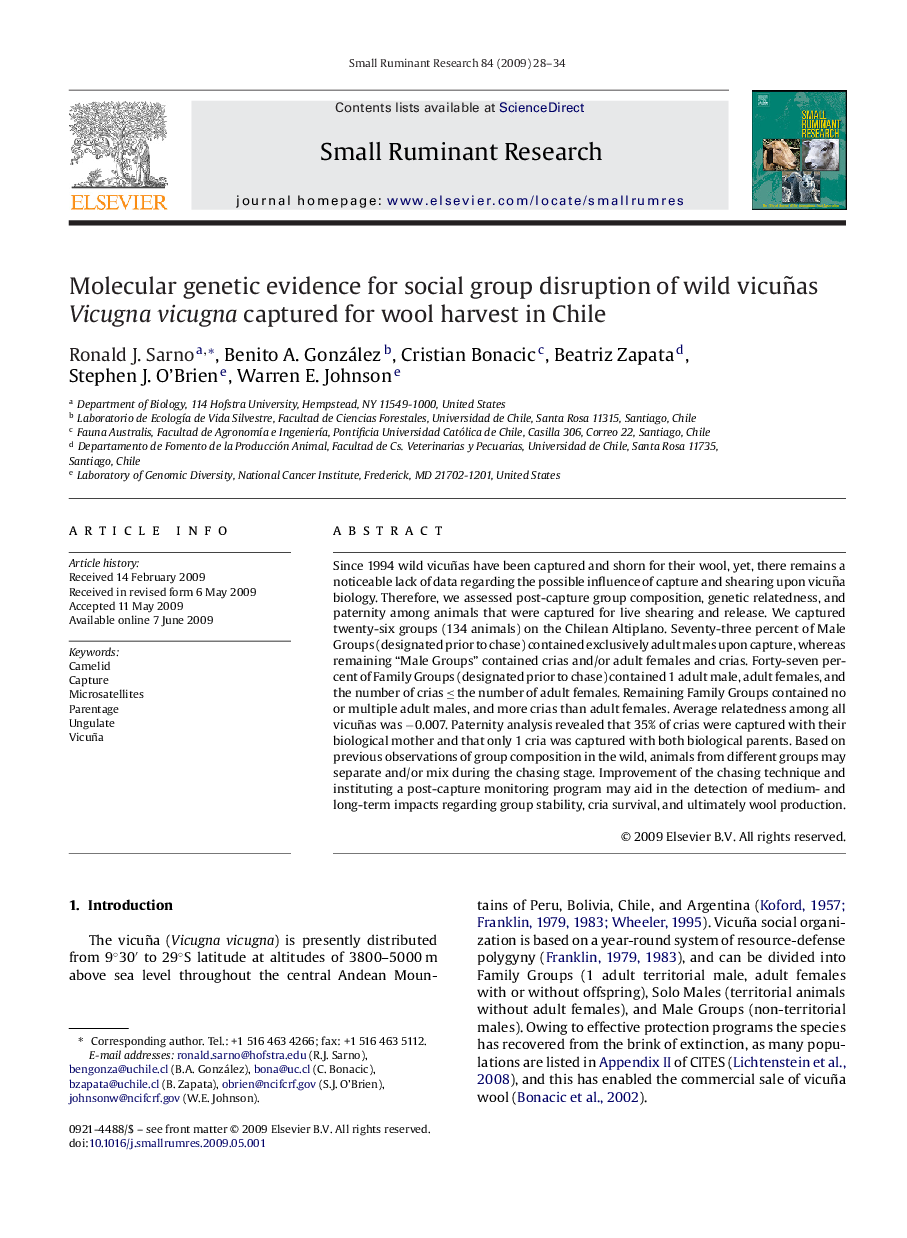| Article ID | Journal | Published Year | Pages | File Type |
|---|---|---|---|---|
| 2457756 | Small Ruminant Research | 2009 | 7 Pages |
Since 1994 wild vicuñas have been captured and shorn for their wool, yet, there remains a noticeable lack of data regarding the possible influence of capture and shearing upon vicuña biology. Therefore, we assessed post-capture group composition, genetic relatedness, and paternity among animals that were captured for live shearing and release. We captured twenty-six groups (134 animals) on the Chilean Altiplano. Seventy-three percent of Male Groups (designated prior to chase) contained exclusively adult males upon capture, whereas remaining “Male Groups” contained crias and/or adult females and crias. Forty-seven percent of Family Groups (designated prior to chase) contained 1 adult male, adult females, and the number of crias ≤ the number of adult females. Remaining Family Groups contained no or multiple adult males, and more crias than adult females. Average relatedness among all vicuñas was −0.007. Paternity analysis revealed that 35% of crias were captured with their biological mother and that only 1 cria was captured with both biological parents. Based on previous observations of group composition in the wild, animals from different groups may separate and/or mix during the chasing stage. Improvement of the chasing technique and instituting a post-capture monitoring program may aid in the detection of medium- and long-term impacts regarding group stability, cria survival, and ultimately wool production.
